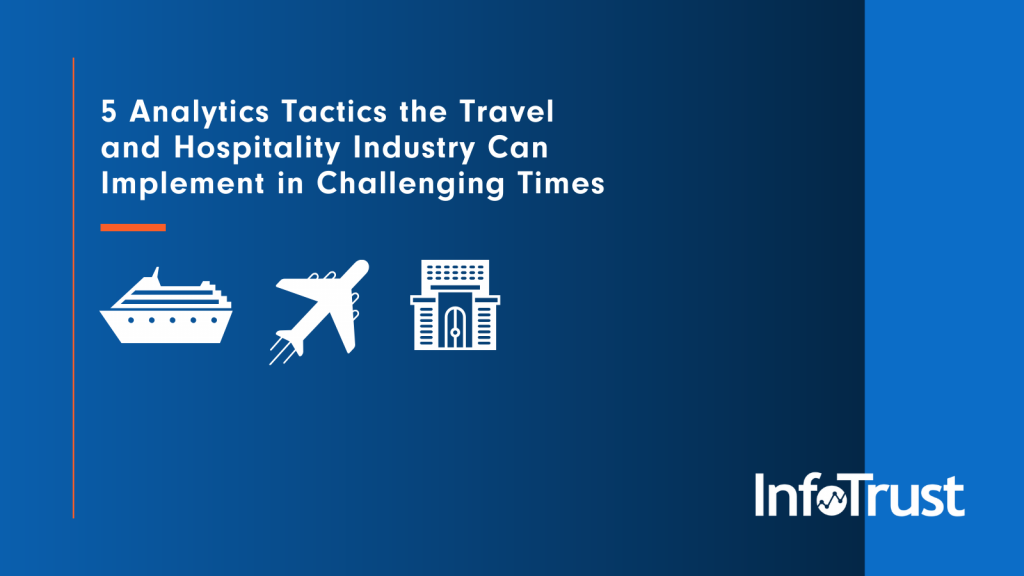In recent weeks, as health concerns are creating an impact on many aspects of our daily lives, a number of businesses and industries are facing unique challenges. The hospitality industry is likely among the most impacted, as business and leisure travelers alike are postponing or cancelling their travel plans.
While considering what to do in the wake of these challenges, there are some efforts that marketers in the travel industry can do to help better understand customer behaviors and mindsets given the current circumstances (and beyond). Whether you are a cruise line, a hotel, an airline company, or any travel/tourism business, below are a few tips to consider to help navigate these challenging times.
1. Understand Your Customers’ Concerns Via Surveys
Numerous tools are available to capture qualitative feedback on how customers are feeling or what would help to ease any concerns. Launching surveys on your website is a quick and effective way to capture this information, analyze it, and take action. For example, Google Surveys make it very easy to set up in just a few steps, and within a short period of time you can begin capturing this valuable information.
2. Refine Your Messaging with A/B Tests
With a tool like Google Optimize, you can test what types of content, messaging, and even offers may resonate with weary travelers. Are they interested in refund policies, rebooking options, or possibly even discounts? Through testing, you can quantitatively measure what content resonates among your website users to drive the outcomes that are most valuable to your organization. Use these insights to not only refine content on your digital channels, but also to inform your marketing messages and tactics. (Optimize also allows for personalization; use this to customize messaging based on a user’s geographic location, in the event regional content is beneficial.)
3. Create Audience Strategies for Users Who Perform Certain Website Journeys
Did users view content about cancellations or refund policies? Did they view an FAQ page about how your organization is addressing health concerns on your properties? Are users still moving through the checkout process, but not taking the final step of booking? Understand what content your consumers are consuming and create relevant audiences that you can use to re-message to them appropriately. A user who is looking for information about cancellations likely does not want to see an ad with your latest deals, but may appreciate some other form of messaging. These can be great opportunities to highlight your customer service and other brand differentiators that can help build customer loyalty.
4. Visualize the Impact on Your Business
Creating dashboards that combine data from your CRM, marketing platforms, analytics platforms, and other data sources can help bring near real-time insights to your leadership team. These insights can allow your organization to be more efficient and effective, making key metrics from disparate systems readily-available to the decision makers. Take a lesson from savvy retailers who build “war rooms” for Black Friday to see where sales, forecasts, marketing opportunities, and other key metrics are on an hourly basis, allowing for rapid tactic adjustments.
Ask yourself, what are the most important metrics I need to know in order to take action? Tools like Google Data Studio can be set up to pull in data from Google Marketing Platform, Analytics 360, and BigQuery to create mission-critical dashboards.
5. Develop a Cohort View of Customers
Customer lifetime value and other data science-enabled analysis has allowed advertisers to better understand the full picture of their customers—to the point where they know who is more likely to buy offline, who is more likely to respond to an offer, who is most profitable, and who travels for business (versus leisure). If you’ve gone through similar cohort development, monitor the behavior of all your cohorts to look for trends and message each cohort with the most relevant information. Leverage the tactics above (surveys, A/B testing) to see what content resonates depending on their needs and concerns.
This is not an exhaustive list of all analytics activities you can undertake now. In fact, there is a robust set of tools in any analytics platform to understand user behavior, flag changes in website behavior, identify search terms that bring customers to your website, and leverage powerful integrations between marketing, analytics, and CRM tools. While each news cycle delivers another set of updates, there are opportunities to get some sense of control over how you interact with your customers.


